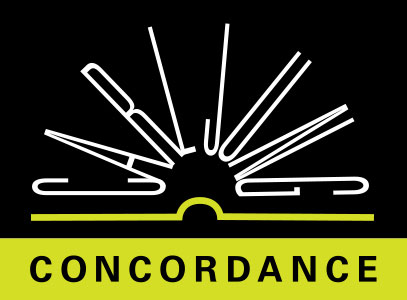If I am right in supposing that every religion is a spontaneous expression of a certain predominant psychological condition, then Christianity was the formulation of a condition that predominated at the beginning of our era and lasted for several centuries:
But a particular psychological condition which predominates for a certain length of time does not exclude the existence of other psychological conditions at other times, and these are equally capable of religious expression
CW11 ¶ 160CHRISTIANITY FIGHTS FOR ITS
LIFE AGAINST GNOSTICISM
Christianity had at one time to fight for its life against Gnosticism, which corresponded to another psychological condition. Gnosticism was stamped out completely and its remnants are so badly mangled that special study is needed to get any insight at all into its inner meaning. But if the historical roots of our symbols extend beyond the Middle Ages they are certainly to be found in Gnosticism. It would not seem to me illogical if a psychological condition, previously suppressed, should reassert itself when the main ideas of the suppressive condition begin to lose their influence. In spite of the suppression of the Gnostic heresy, it continued to flourish throughout the Middle Ages under the disguise of alchemy
CW11 ¶ 160RELIGIOUS OR PHILOSOPHICAL
VIEWS OF ANCIENT ALCHEMY
It is a well-known fact that alchemy consisted of two parts which complement one anotheron the one hand chemical research proper and on the other the “theoria” or “philosophia.” As is clear from the writings of Pseudo-Democritus in the first centurythe two aspects already belonged together at the beginning of our era. The same holds true of the Leiden papyri and the writings of Zosimos in the third century. The religious or philosophical views of ancient alchemy were clearly Gnostic
CW11 ¶ 160The later views seem to cluster round the following central idea: The anima mundi, the demiurge or divine spirit that incubated the chaotic waters of the beginning, remained in matter in a potential state, and the initial chaotic condition persisted with it. Thus the philosophers or the “sons of wisdom” as they called themselves, took their prima materia to be a part of the original chaos pregnant with spirit. By “spirit” they understood a semimaterial pneuma, a sort of “subtle body,” which they also called “volatile” and identified chemically with oxides and other dissoluble compounds
CW11 ¶ 160EXTRACT THE DIVINE SPIRIT
OUT OF THE CHAOS
They called this spirit Mercurius, which was chemically quicksilverthough “Mercurius noster” was no ordinary Hg!and philosophically Hermes, the god of revelation, who, as Hermes Trismegistus, was the arch-authority on alchemy. Their aim was to extract the original divine spirit out of the chaos, and this extract was called the quinta essentia, aqua permanens,or tinctura
CW11 ¶ 160ALCHEMIST JOHANNES DE RUPESCISSA
A famous alchemist, Johannes de Rupescissa (d. 1375), calls the quintessence “le ciel humain,” the human sky or heaven. For him it was a blue liquid and incorruptible like the sky. He says that the quintessence is of the colour of the sky “and our sun has adorned it, as the sun adorns the sky.” The sun is an allegory of gold. He says: “This sun is true gold.” He continues: “These two things joined together influence in usthe condition of the Heaven of heavens, and of the heavenly Sun.” His idea is, obviously, that the quintessence, the blue sky with the golden sun in it, evokes corresponding images of the heaven and the heavenly sun in ourselves. It is a picture of a blue and golden microcosm, and I take it to be a direct parallel to Guillaume's celestial vision
CW11 ¶ 160THE DIVINE WATER AS SKY OR HEAVEN
The miraculous liquid, the divine water, called sky or heaven, probably refers to the supra-celestial waters of Genesis 1 : 7. In its functional aspect it was thought to be a sort of baptismal water which, like the holy water of the Church, possesses a creative and transformative quality. The Catholic Church still performs the rite of the benedictio fontis on Holy Saturday before Easter. The rite consists in a repetition of the descensus spiritus sancti in aquam. The ordinary water thereby acquires the divine quality of transforming and giving spiritual rebirth to man. This is exactly the alchemical idea of the divine water, and there would be no difficulty whatever in deriving the aqua permanens of alchemy from the rite of the benedictio fontis were it not that the former is of pagan origin and certainly the older of the two
CW11 ¶ 161We find the miraculous water mentioned in the first treatises of Greek alchemy, which belong to the first century. Moreover the descent of the spirit into Physis is a Gnostic legend that greatly influenced Mani. And it was possibly through Manichean influences that it became one of the main ideas of Latin alchemy
CW11 ¶ 161THE AIM OF THE PHILOSOPHERS
The aim of the philosophers was to transform imperfect matter chemically into gold, the panacea, or the elixir vitae, but philosophically or mystically into the divine hermaphrodite, the second Adam, the glorified, incorruptible body of resurrection, or the lumen luminum, the illumination of the human mind, or sapientia. As I have shown, together with Richard Wilhelm, Chinese alchemy produced the same idea, that the goal of the opus magnum, the creation of the “diamond body”
CW11 ¶ 161